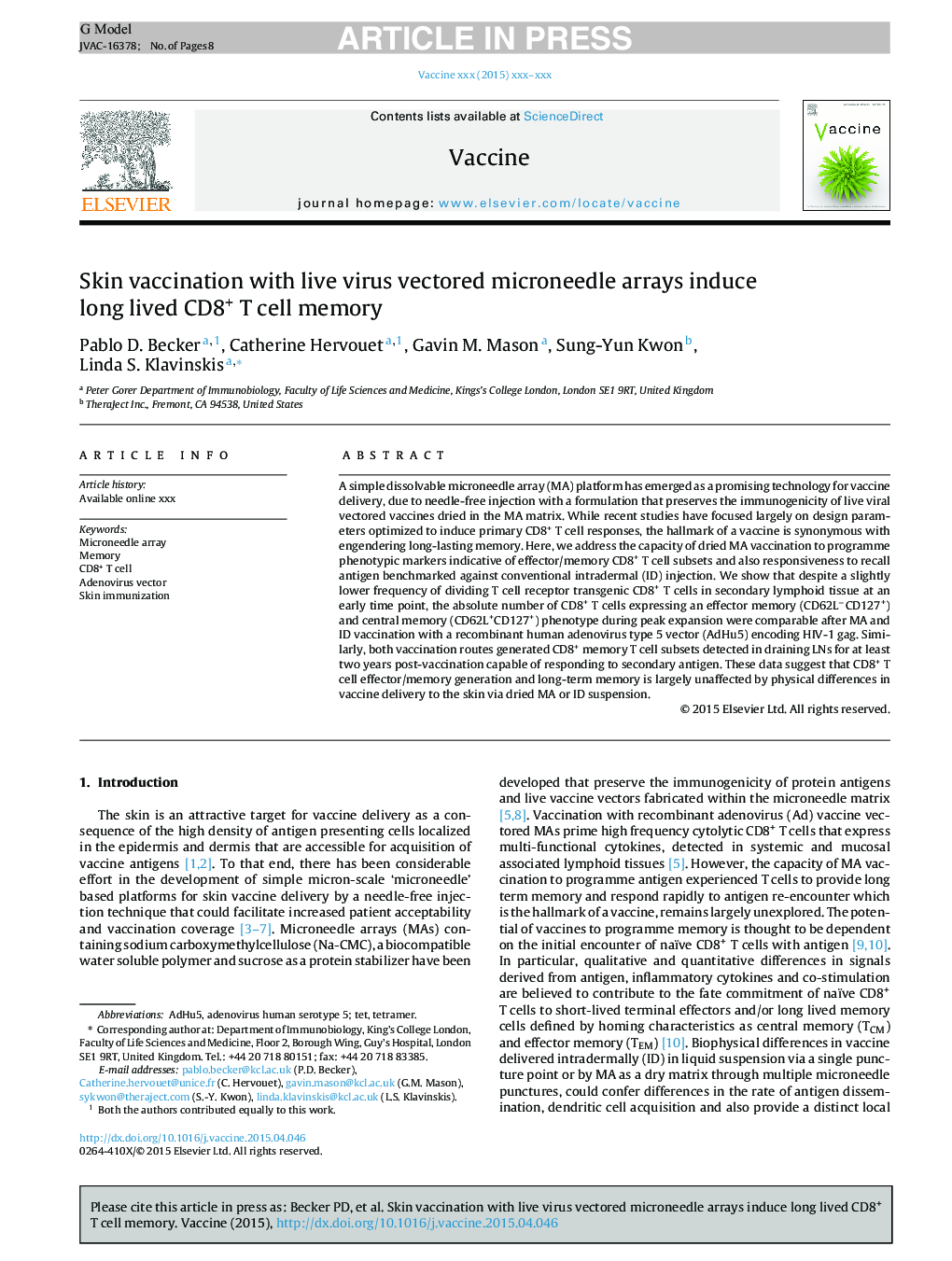| Article ID | Journal | Published Year | Pages | File Type |
|---|---|---|---|---|
| 10964273 | Vaccine | 2015 | 8 Pages |
Abstract
A simple dissolvable microneedle array (MA) platform has emerged as a promising technology for vaccine delivery, due to needle-free injection with a formulation that preserves the immunogenicity of live viral vectored vaccines dried in the MA matrix. While recent studies have focused largely on design parameters optimized to induce primary CD8+ T cell responses, the hallmark of a vaccine is synonymous with engendering long-lasting memory. Here, we address the capacity of dried MA vaccination to programme phenotypic markers indicative of effector/memory CD8+ T cell subsets and also responsiveness to recall antigen benchmarked against conventional intradermal (ID) injection. We show that despite a slightly lower frequency of dividing T cell receptor transgenic CD8+ T cells in secondary lymphoid tissue at an early time point, the absolute number of CD8+ T cells expressing an effector memory (CD62LâCD127+) and central memory (CD62L+CD127+) phenotype during peak expansion were comparable after MA and ID vaccination with a recombinant human adenovirus type 5 vector (AdHu5) encoding HIV-1 gag. Similarly, both vaccination routes generated CD8+ memory T cell subsets detected in draining LNs for at least two years post-vaccination capable of responding to secondary antigen. These data suggest that CD8+ T cell effector/memory generation and long-term memory is largely unaffected by physical differences in vaccine delivery to the skin via dried MA or ID suspension.
Related Topics
Life Sciences
Immunology and Microbiology
Immunology
Authors
Pablo D. Becker, Catherine Hervouet, Gavin M. Mason, Sung-Yun Kwon, Linda S. Klavinskis,
